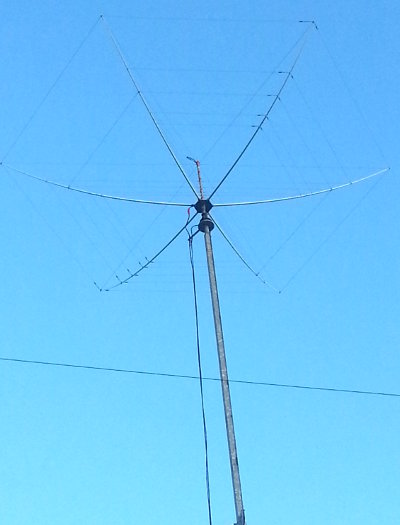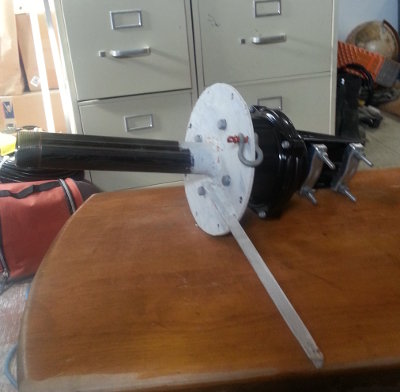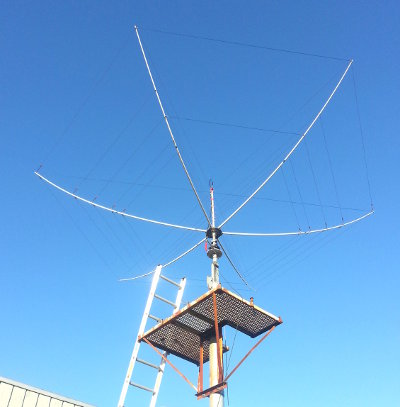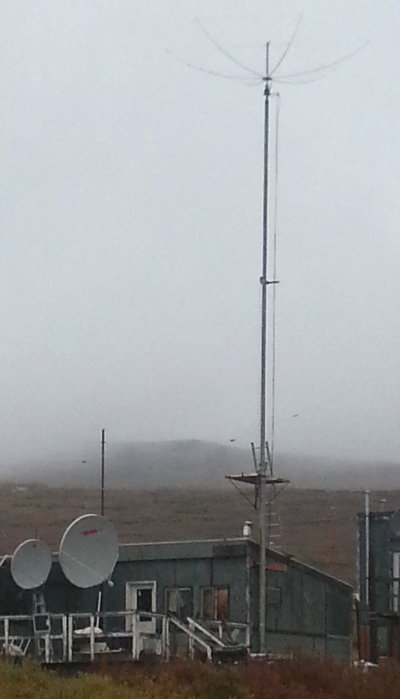
And the winner is .... !
I ordered the a Traffie HB5xi Hex Beam. shown at left under clear, blue skies at my QTH.
This antenna was $1,229.30 including USPS priority mail shipping. Not many antennas are US Mail shippable!
The picture at left was taken on 9/12/2013 at my own QTH. It is a pretty sight!
|
The differences are:
Broadband Hex antennas are also made by DX Engineering and NA4RR, and there are a few kits out there as well. But I do recommend the K4KIO if you want a BB Hex. My research revealed that an Aluminum 2-element tribander will be more brittle in the ice/wind; will have less gain than the Hex, and would only cover three bands (20-15-10) vs the Hex's 5 bands (20-17-15-12-10). A three element aluminum trap Tribander still covers only 3 bands, has much more wind area and weight, and has only a marginal gain advantage over the Hex. The Traffie Hex's smaller size, reduced wind load etc. would also give it an advantage over the B.B. Hex in survivability here in my mountain valley QTH. The BB would not have survivability issues in downtown Nome, and is a perfectly viable alternative. You can obtain a wealth of information in Understanding the Hexbeam by Steve, G3TXQ |

|
|

|
|

|
|

|
|

|
|
Performance and Operational DetailsThe antenna performs beautifully. Here are some figures
That is impressive performance. How does it work?In a nutshell, simply fantastic. Front to side and front to back ratio is very pronounced, and better than I ever got with an aluminum 2- and later 3- element trap tribanders back in 1972. Listening to a South American Chilean station having a QSO with a Siberian station, I first aimed the beam at Chile. He was then S4 to S5. The Russian was about S5 as well. Turning the beam around, the Russian rose to S9+ and the Chilean station faded into the background. Today, 9/12/13, I turned on my rig and had the beam pointed at the lower 48 states (due east). I could hear some Europeans coming in rather weak, S3 to S5. I swung the beam north towards Europe. The Europeans all came up to S9+ with pronounced auroral flutter. In short order I called a Swedish Station SM2EKM and exchanged 599+ reports. He was about 10db over S9 -- also called "pounding in." Although, the auroral flutter gave his signal a surreal sound. Part A: The Tower Part B: Temporary 20m Dipole Part D: Aiming the HF Antenna Part E: The ICOM IC-7410 Radio Part F: AL7X goes Digital! Return to XAlaska main page Copyright 2013, Ramon Gandia |